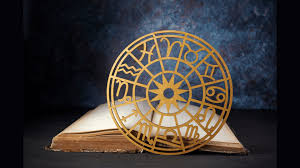Sidereal metrics in Indian Vedic astrology refer to the system of measuring celestial positions based on the actual location of stars and constellations in the sky. Unlike the tropical zodiac used in Western astrology, which is tied to the Earth’s seasons, the sidereal zodiac accounts for the gradual shift of the Earth’s axis over time (known as precession). This makes it more aligned with the fixed positions of stars.
Key Features of Sidereal Metrics:
- Star-Based Measurement: The sidereal zodiac uses the positions of fixed stars to determine the placement of planets and signs.
- Ayanamsa: This is the difference between the tropical and sidereal zodiacs, which accounts for the precession of the equinoxes. In Vedic astrology, the Lahiri Ayanamsa is commonly used.
- Nakshatras: The sidereal system divides the zodiac into 27 lunar mansions or nakshatras, each spanning 13°20′. These are crucial for detailed astrological analysis.
Example:
Imagine a person born on March 15th. In tropical astrology, their Sun sign might be Pisces. However, in sidereal Vedic astrology, due to the precession and the use of Ayanamsa, their Sun sign could shift to Aquarius. This difference arises because the sidereal system aligns the zodiac signs with their corresponding constellations.
Another example is the use of nakshatras. If the Moon is positioned at 5° Taurus in the sidereal chart, it would fall under the Rohini nakshatra, which is associated with creativity and charm.
Sidereal metrics provide a more astronomically accurate framework for interpreting planetary influences, making it a cornerstone of Vedic astrology.
Nakshatras and Ayanamsa, two integral aspects of sidereal metrics in Indian Vedic astrology.
Nakshatras (Lunar Mansions):
Nakshatras are 27 divisions of the zodiac, each spanning 13°20′, and are based on the Moon’s position at any given moment. These divisions represent specific star constellations and have profound astrological significance.
Key Points About Nakshatras:
- Characteristics: Each nakshatra has a ruling planet, deity, symbol, and unique set of characteristics. It provides insight into a person’s personality, strengths, weaknesses, and karmic patterns.
- Padas: Each nakshatra is divided into four padas (quarters), with each pada corresponding to a specific aspect of the zodiac and influencing finer details of a person’s life.
- Usage: Nakshatras play a significant role in muhurta (electional astrology), compatibility analysis, and determining specific remedies or rituals.
Example:
If someone has their Moon in Rohini Nakshatra, the key traits include:
- Ruling Planet: Moon
- Symbol: Chariot
- Deity: Brahma (the Creator)
- Attributes: Creativity, charm, and a nurturing nature.
The padas of Rohini influence finer attributes:
- Pada 1 (Aries Navamsa): Leadership and initiative.
- Pada 2 (Taurus Navamsa): Grounded and materialistic tendencies.
- Pada 3 (Gemini Navamsa): Communication skills and adaptability.
- Pada 4 (Cancer Navamsa): Emotional depth and sensitivity.
Ayanamsa (Precessional Adjustment):
Ayanamsa represents the angular difference between the tropical and sidereal zodiacs due to the precession of the equinoxes. It’s what allows the sidereal system to stay aligned with fixed stars.
Key Points About Ayanamsa:
- Types: Different scholars use different methods to calculate Ayanamsa. The Lahiri Ayanamsa is the most widely accepted in Vedic astrology.
- Impact: It shifts planetary positions by approximately 24° (as of now), which is why there’s often a discrepancy between tropical and sidereal charts.
- Calculation: To determine the sidereal position, subtract the Ayanamsa from the tropical position.
Example:
If the tropical Sun is at 15° Aries on a given date, and the Ayanamsa is 24°, the sidereal position of the Sun would be:
- 15° Aries – 24° = 21° Pisces (sidereal).
This adjustment ensures that planetary calculations reflect the actual star positions.
These foundational elements make sidereal metrics in Vedic astrology precise and deeply insightful. Would you like to explore how these principles interact in practice, such as in muhurta or compatibility analysis? Or perhaps you’d like to discuss their historical evolution?




